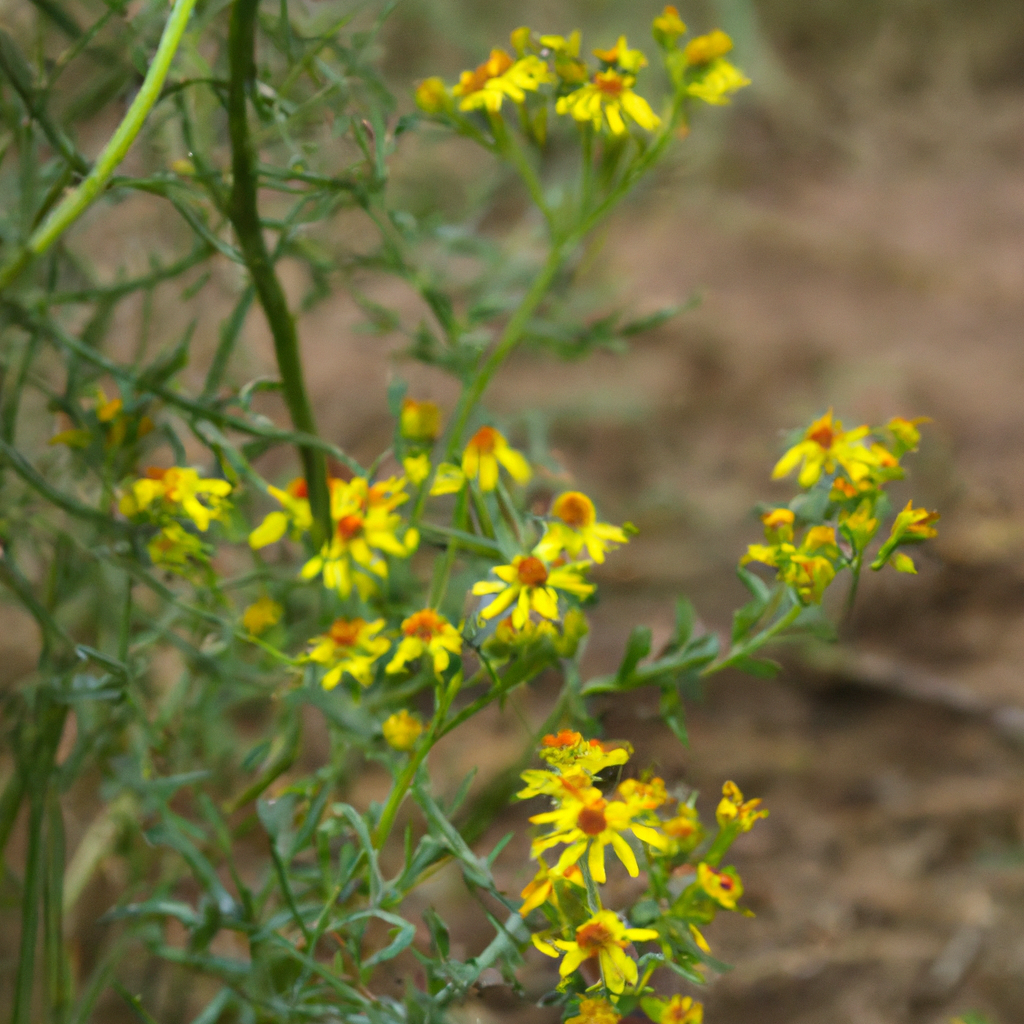Biological Name:
Packera anonyma (Texas-Ragwort)
Natural Habitat:
Texas-Ragwort: Typically found in dry, rocky habitats in the southwestern United States.
Description:
Texas-Ragwort also known as Senecio is a plant that is native to grassland and prairie regions of North America. It is an annual herb that can grow up to two feet tall and it has small oval-shaped leaves and small yellow or white flowers that bloom in the spring. The plant is known for its ability to produce toxins that can be harmful to grazing animals and it is often considered a weed in agricultural fields.
Frequently Asked Questions (FAQs)
Q: Is Texas ragwort edible?
A: All species of the genus Senecio are poisonous if ingested, texas Ragwort is no exception. It contains alkaloids that accumulate in the body over time, mostly damaging the liver, but also other organs.
Source
Q: Should I pull out ragwort?
A: Ragwort is biennial (flowers every two years) and its seeds lie dormant in the ground which means removal of the plant is required annually for at least two years to ensure the weed is brought under control.
Source
Q: What are symptoms of ragwort poisoning in humans?
A: Abdominal pain (colic).Diarrhoea, constipation and straining.In-coordination.Skin photosensitisation.Yawning.Head pressing.Apparent blindness.Collapse, coma, death.
Source
Q: Can pulling ragwort make you sick?
A: Cases of poisoning occurring in late winter and spring often result from the feeding for some months previously of hay or silage cut from ragwort infested swards. The only way to safeguard against loss from ragwort poisoning is to eradicate the weed either by pulling, ploughing, cutting or chemical control.
Source
Q: Where does ragwort grow best?
A: Ragwort prefers areas of open space with some area of bare ground for seeds to germinate in, particularly in high rainfall areas. It will invade open forests, riverbeds, swamps, pastures and coastal areas. It also tolerates a wide range of environmental conditions, except for shade.
Source
Q: What happens if you touch ragwort?
A: Q4: Is Ragwort poisonous to humans? Although Ragwort is poisonous to humans there is little risk due to it being distasteful and not used as food. People have complained about irritated skin after handled Ragwort, therefore, we would always recommend avoiding skin contact with this plant.
Source
Q: Does ragwort grow in Texas?
A: Senecio ampullaceus, also known as Texas ragwort, Texas squaw-weed, Texas groundsel, and Texas butterweed, is a species of Senecio in the family Asteraceae, receiving its Latin name ampullaceus from its flask shaped flower-head. It is recommended for landscape use in its native Texas.
Source
Q: Should I pull up ragwort?
A: They should be removed and burnt. Pulling is practical where weed numbers are low, but the benefit is only temporary. Roots remaining in the soil will give rise to new plants.
Source
Q: Is it illegal to grow ragwort?
A: It’s often said that it’s illegal to have ragwort growing on your land. it isn’t. Under the Weeds Act 1959 the Secretary of State may serve an enforcement notice on the occupier of any land on which injurious weeds are growing, requiring the occupier to take action to prevent the spread of injurious weeds.
Source
Q: Do landowners have to remove ragwort?
A: It isn’t an offence for ragwort to grow in certain areas but because common ragwort is a specified weed under the Weeds Act (1959), landowners/occupiers have an obligation to control the spread if it poses a high risk (within 50 metres) of land used for grazing or forage production.
Source
Q: Is Texas ragwort invasive?
A: The bright yellow flower popping-up in clusters along local roads this month is called tansy ragwort (Jacobaea vulgaris), and it is a nasty, invasive weed.
Source
Q: Why is it called ragwort?
A: The species name is from jacobaeus, the Latin word for St. James (Jacobus) (7). The word ragwort probably refers to the ragged form of the leaves; the term entered the English language in 1450 (15).
Source
Q: Is it OK to touch ragwort?
A: Although Ragwort is poisonous to humans there is little risk due to it being distasteful and not used as food. People have complained about irritated skin after handled Ragwort, therefore, we would always recommend avoiding skin contact with this plant.
Source
Q: Is it illegal to have ragwort on your land?
A: It is not an offence to have ragwort growing on your land and can have conservation benefits, attracting butterflies, bees and other beneficial insects. However, it must not be allowed to spread to agricultural land, particularly grazing areas or land which is used to produce conserved forage.
Source
Q: Is it law to remove ragwort?
A: It isn’t an offence for ragwort to grow in certain areas but because common ragwort is a specified weed under the Weeds Act (1959), landowners/occupiers have an obligation to control the spread if it poses a high risk (within 50 metres) of land used for grazing or forage production.
Source
Q: Is ragwort good for anything?
A: It makes a good gargle for ulcerated throat and mouth, and is said to take away the pain caused by the sting of bees. A decoction of the root has been reputed good for inward bruises and wounds. In some parts of the country Ragwort is accredited with the power of preventing infection.
Source
Q: Should you wear gloves when pulling ragwort?
A: 1 Ragwort is a toxic plant and suitable precautions must be taken when handling both live and dead plants. Hands must be protected by wearing sturdy, waterproof, gardening-type gloves. Arms and legs should also be covered.
Source
Q: What happens if you cut ragwort?
A: Cutting can stimulate growth and cause the plant to re-flower later in the season. Cutting at early flowering stage may reduce seed production, but is not generally a recommended method as it does not destroy the plant. Cut plants remain toxic.
Source

